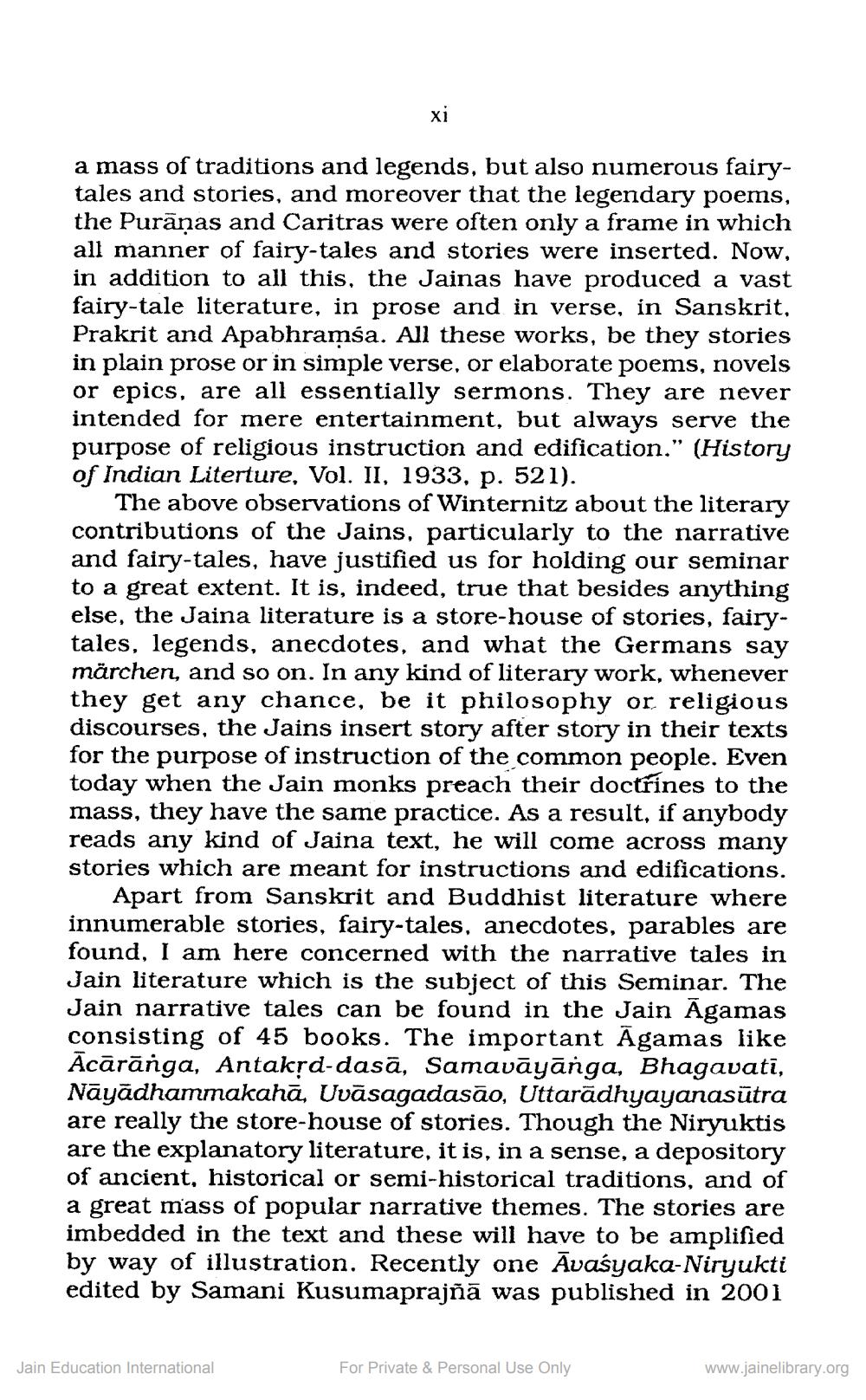________________
xi
a mass of traditions and legends, but also numerous fairytales and stories, and moreover that the legendary poems, the Purānas and Caritras were often only a frame in which all manner of fairy-tales and stories were inserted. Now, in addition to all this, the Jainas have produced a vast fairy-tale literature, in prose and in verse, in Sanskrit, Prakrit and Apabhramsa. All these works, be they stories in plain prose or in simple verse, or elaborate poems, novels or epics, are all essentially sermons. They are never intended for mere entertainment, but always serve the purpose of religious instruction and edification." (History of Indian Literture, Vol. II, 1933, p. 521).
The above observations of Winternitz about the literary contributions of the Jains, particularly to the narrative and fairy-tales, have justified us for holding our seminar to a great extent. It is, indeed, true that besides anything else, the Jaina literature is a store-house of stories, fairytales, legends, anecdotes, and what the Germans say märchen, and so on. In any kind of literary work, whenever they get any chance, be it philosophy or religious discourses, the Jains insert story after story in their texts for the purpose of instruction of the common people. Even today when the Jain monks preach their doctrines to the mass, they have the same practice. As a result, if anybody reads any kind of Jaina text, he will come across many stories which are meant for instructions and edifications.
Apart from Sanskrit and Buddhist literature where innumerable stories, fairy-tales, anecdotes, parables are found, I am here concerned with the narrative tales in Jain literature which is the subject of this Seminar. The Jain narrative tales can be found in the Jain Agamas consisting of 45 books. The important Agamas like Acārānga, Antakṛd-dasā, Samavāyānga, Bhagavati, Nāyādhammakahā, Uvāsagadasão, Uttarādhyayanasūtra are really the store-house of stories. Though the Niryuktis are the explanatory literature, it is, in a sense, a depository of ancient, historical or semi-historical traditions, and of a great mass of popular narrative themes. The stories are imbedded in the text and these will have to be amplified by way of illustration. Recently one Avaśyaka-Niryukti edited by Samani Kusumaprajñā was published in 2001
Jain Education International
For Private & Personal Use Only
www.jainelibrary.org




